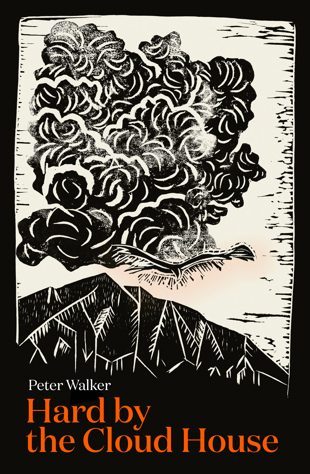Jack Ross reviews Hard by the Cloud House by Peter Walker for Landfall Review Online:
‘Travel writing is the least demanding of genres. You can write anything. You can write that there was nothing to write about. I could describe the croissants, of Parisian quality, on sale at the Uturoa bakery, or the Raiatean girls dancing on the backs of beflowered lorries on Bastille Day, or the strange sensation, crossing a glass-floored fale in the middle of the night and seeing coloured fish dart beneath your feet as in a diagram of the unconscious.
Depending on your temperament, you may find this description of travel writing—‘You can write anything’—reassuring or a little ominous. In any case, I suspect it was wise of Peter Walker to postpone it to the last of the three sections of his book. What is this book about, anyway? It begins with a richly detailed account of the discovery and various scientific controversies surrounding Te Hokioi or ‘Haast’s eagle’ (Hieraaetus moorei). This is popular science writing of the first order: as good as anything by Richard Dawkins or Stephen Jay Gould.
We learn here of the pronounced lack of interest in this raptor when researchers thought it must have been too ungainly to fly and thus condemned to hop about scavenging any small creatures too slow to outrun it. Now that this opinion has been overturned—by most experts, at least—its remains are again in high demand. So much for scientific objectivity.
The second section is dominated by history. What begins as a discussion of one possible locale for the depredations of this monstrous eagle—now also identified with the pouākai of Māori legend—morphs into a chilling account of the brutal and rapacious acquisition of the Canterbury Plains by a series of villains headed by Governor Grey himself. Again, riveting stuff: something I certainly should have known about, but I have to confess that I didn’t, certainly not in such detail.
After that, in the third section, we stray into personal history or even allegory. The contention that Haast’s eagle may be the original of the ‘Roc’, or ‘Rukh’, or ‘Rukhkh’ of Islamic legend—writer and explorer Richard Burton gives all three of these as possible spellings in the notes to his exhaustive sixteen-volume 1885 translation of the Arabian Nights—is a bold one, to say the least. Walker, however, not content with this, suggests that it may also have inspired the Garuda bird of Indian and South East Asian folklore.
Indeed, as he morphs into a discussion of Te Hokioi’s possible associations with the Korotangi—a mysterious serpentine-stone bird carving discovered in the roots of a mānuka tree on the shores of the Aotea Harbour, near Kawhia, in 1878—it gradually becomes apparent that this section is not meant to be read in quite the same way as first two parts of the book.
One could see this three-part structure simply as an attempt to impose order on an unruly collection of materials gathered over decades and now needing to be fixed in final form between two covers. I’d prefer, however, to follow the lead of Peter Walker’s definition of ‘travel writing’, quoted above, and to see it instead as an exceptionally entertaining—and informative—contribution to that genre.’
Read the rest of the review here.


